From the slow and simple (ultralight) to the complex and fast (jets), there is an airplane “pecking order” that affects your aviation adventure.
Throughout my life, I have learned that there will always be airplanes that can fly higher, faster and farther relative to what I am flying at the time. Pick any plane. I’ll name one that is better by the higher-faster-farther definition.
As you learn to fly, I am certain that you too will be tempted in this same way — it’s perpetuated by the opinions of wise aviation people you will meet. Be aware that it is not necessary to climb the higher-faster-farther ladder if you want to fly.
Understand that there are many types of aircraft that appeal to people for many different reasons. To pursue your passion for flying, continuously ask yourself:
“How high, fast, and far do I want to go?”
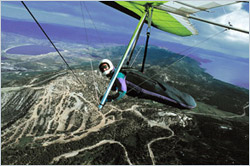
My Story
Coming around to my own answer to that question has had both frustration and adventure in it. But I believe my story will demonstrate why you should ask yourself the question at the beginning of your flying lessons and throughout.
At the beginning, my primary set of wings was a hang glider. It’s a thrilling, challenging, exhilarating and adventitious form of flying. This highly developed flying wing was the result of the work of Leonardo De Vinci, Otto Lilienthal, the Wright Brothers, and the NASA Rogallo wing, followed by 30 years of evolution.
Right out of college, I went to work for Lear Fan (Bill Lear of the Lear Jet), a company where everyone was involved in aviation. The consensus among my new mentors was that I needed to get into a flying club and start taking lessons in a “real” airplane. This was the first time I was hit with the “higher, faster, farther” challenge. And, by that definition, everything was “better” than my hang glider. So, I willingly followed this qualified advice and started lessons in a Cessna 150 and a Piper Cherokee PA-28.
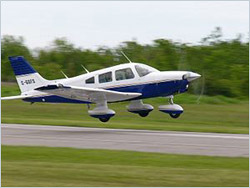
I shared my new flying airplane experience on a visit with my doctor, who was also a pilot with his private instrument rating. As you might expect, he too had an opinion about what qualifies as the best plane to fly. “You need two engines if you want to fly safe,” said my doctor. “I have a Cessna 310, so I’m not forced down if one of the engines fail.”
I started wondering how these words of wisdom—that twin-engine planes mean safer flying—would affect my future in aviation.
Fast-forward some time. I struck up a conversation with a person waiting in line to board a commercial flight. His bag had a Boeing name tag on it, so I asked, “Do you work for Boeing?”
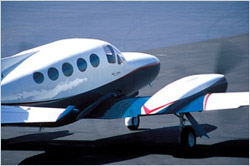
“No,” he replied. “I am a consultant on their commercial jet development program.” The ensuing conversation showed me that he was an informed and seasoned professional. I had to know what he preferred to fly. “Jets only!” he exclaimed. “Turbines are much more reliable than pistons.” He spouted off some impressive figures backing up his claims, and summed up saying, “Turbines just go round smoothly and reliably.”
With my engineering background and knowledge, I found his statement is hard to argue with. I agreed that aircraft turbine engines are more reliable than reciprocating engines.

I was beginning to think the first piece of advice—to fly a reciprocating single-engine—was getting a bit risky, but if I wanted to follow the higher-faster-farther path, that was my next step along the way.
Justification for the Safety Advice
Armed now with all this advice from people I greatly respected, one day I chose to make a more detailed preflight inspection of an engine than my instructor prescribed. In fact, on this day I insisted that we go to the extraordinary step of taking off the cowl and looking inside the engine compartment. We were amazed to find an orange shop rag in a position where it could have gotten into the cowling flap and stop the cooling flow—a potentially unsafe situation! This must be what the twin and jet guys were talking about, I thought, as their words about reliability and safety rang true in my mind. Apparently, the plane’s annual maintenance and inspection had just been completed, accidentally leaving the shop rag behind.
What a relief that I insisted on taking the extra time to do a thorough preflight. This was a good lesson, teaching me to perform a comprehensive preflight of an aircraft before every flight.
Unfortunately, during my next preflight inspection of the airplane engine, I found another surprising problem–a baffle that was loose. The instructor shrugged it off saying, “This is a club training airplane and the students take their toll on it.”
Yikes! Was this what I should expect from my airplane when learning to fly? Should I really be depending on others to determine my safety while flying?
The credibility of the higher-faster-farther advice was increasing and started to make more sense to me with my training airplane experiences. It appeared worth it, I thought, to climb the ladder and continue up this airplane pecking order. I continued some flying lessons in that Cherokee but it simply was not the same feeling, so I went back to pursue my first passion of flying for fun.
The lure of flying hang gliders—even adding an engine—simply beckoned me too much. Nothing compares to the freedom of flying with the wind in your face, each moment intense and invigorating. Even though I agree with the advice I received about twin prop and turbine engine planes, I enjoy hang gliding too much to let go of it. It’s the one form of flying that most resembles flying like a bird.
I continued to wonder, though, if I was making the right decision. Should I go back to the climb, riding the pecking order up to jets?
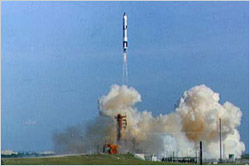
Final Confirmation from the Fastest
As an aircraft engineering consultant, I had the chance of a lifetime to meet astronaut Gordon Cooper. To me, he represented a pilot at the absolute top of the pecking order. Can you guess how many jets Gordon flew to pilot a rocket? You can bet that it’s an impressive list. I wondered though, what plane was he flying these days?
After a business meeting, Gordon and I walked out to his airplane, which was set up to fly with a unique fuel mixture, the topic of our business meeting. The airplane itself was a well used, single-engine Piper Super Cub. Nothing about it met my expectations about what Gordon would fly, with respect to the higher-faster-farther wisdom I had received.
So I had to ask, “Gordon, you have flown the fastest, highest and farthest of all the pilots in the world. Do you really enjoy flying this slow single-engine airplane?” Without hesitation, Gordon answered, “More than ever! I enjoy flying when I can relax and not work. Testing jets (especially rockets) is intense with extreme pressures. This plane offers me the sweet simplicity I need to just enjoy the experience of flying.”
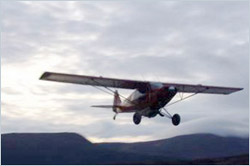
That conversation helped me to appreciate flying more simply—for the delight and enchantment of getting up in the air just for the fun of it with the wind in my face.
Today, with my focus on flying Light-Sport aircraft, I know many commercial jet pilots who like to fly single engine airplanes, trikes and powered parachutes for the fun of flying.
The Answer
Learning new skills in higher and higher performance aircraft is fun and challenging, but it is not necessary to climb the ladder and work your way up the pecking order. You should choose the level that fits your lifestyle. Having that clarity will allow you to focus solely on what drives your passion for flying.
About Paul
Paul Hamilton is recognized as an expert in the Light Sport Aircraft (LSA) category. He is a pilot, flight instructor, aviation engineer, consultant, writer, video producer and business owner. Through his company, Adventure Productions, Paul specializes in teaching and informing people about flying (especially LSA) including students, pilots, instructors, mechanics, engineers and aerodynamicists.




